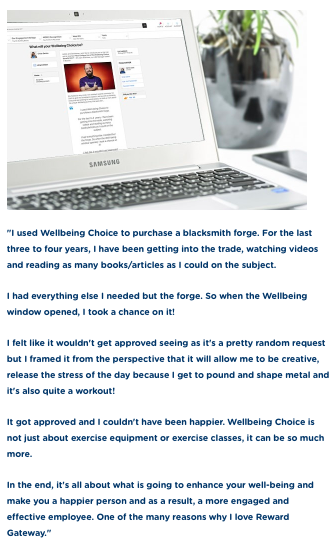If you've got an awesome employee benefits program, it's not always safe to assume all your people know it exists or how to access all their benefits. Numerous studies show that you need to repeat your message at least 3 times (yes, 3!) before it really sinks in, while others say you need a certain number of touchpoints (anything from 6 to 13) before people take action. So, just announcing your benefits scheme to new staff when they join your organisation or hiding it in your employee handbook is definitely not enough to get engagement with it. With all the reading your people do in their first week of work, it’s likely they’ve already forgotten what information is even there!
A study by Metlife showed that while 68% of employers believe they educate their employees well about their benefits programs, just under 1 out of 3 (31%) of employees feel they have sufficient information.
What can you do to inform and excite your people about their employee benefits and maximise the investment you have made?
1. Make sure you have a single source of truth
Investing in an employee benefits portal might seem like a big ask, but having an easily accessible (and updateable!) source where any employee can view information about the benefits will make a huge difference to the engagement and uptake of what you have on offer. Instead of having to find the right document, policy, or form, or wait to talk to someone, your employees have the option to self-serve and, in some cases, access some employee benefits immediately. Having a live portal also means you have the added benefit of being able to update information in real-time.
2. Use blogs and news pages to tell stories about employee benefits
These stories can be informal, brief and only take 20 to 30 minutes to put together before being published on your employee communications platform. You can have a 10 minute chat with an employee who makes use of a benefit you want to showcase, for example, someone who:
- Works flexible hours.
- Uses their wellbeing benefit to pay for a gym membership or a dance class.
- Uses employee discounts once a week when they do groceries.
- Takes advantage of novated leasing offered by a corporate partner.
You just have to ask them what benefit they use, why, and what impact it’s had on them (it might be a financial, mental, or even relational benefit!), then spend another 15 minutes summarising that into a 250-400 word blog post, and 5 minutes to publish it. And voila!.

Whether you publish these employee stories weekly or monthly, by the end of the year you’ll have a collection of 12-50 stories from your people that demonstrate how employee benefits make a difference in people’s day-to-day lives! These also make compelling reading when you are recruiting new talent.
3. Use specific branding or pages to make real-time announcements
If you have a special employee discount or a window of time when employees can apply for certain benefits, use branded images and announcements to let people know. You can publish them in your regular comms channels, or run an email campaign with the image leading people to your employee benefits hub, where they can get more information.
The key is to use these opportunities to generate excitement while reinforcing your employer brand.
4. Use social media to reach offline or casual employees
It’s not always easy to communicate with employees if they’re not working at a desk, if they’re not all in one location, or if they don’t all have company email addresses. One company we work with uses an Instagram account dedicated solely to notifying new and existing employees of their employee discounts and benefits programmes. It’s a great way to reach their young employee demographic where they are, and communicate in a way that’s relevant and fresh.

5. Engage frontline managers
At the end of the day, your frontline managers are key to communicating information to your employee community. If supported with the right information and training, these leaders can help drive job satisfaction by encouraging and educating their team members to participate more fully in benefits programs.
6. Get physical
Hard copy is still popular, so make sure your employee handbook at least contains a summary and a link to where they can find up-to-date information about their employee benefits. Posters and leaflets are also a great way to generate excitement about new or seasonal benefits – and are a great secondary channel to publish the stories you collected in point 2.

7. Communicate face-to-face
Quarterly or bi-annual town hall meetings or lunch and learns allow you to dedicate time to speaking about benefits programes, update new benefits and features and field questions your employees may have. Anyone with a smartphone or laptop with an inbuilt camera and microphone has the ability to create a video from that presentation — you can either record it during the meeting, film a summary that is emailed out or published on your employee communications channels.
Whether you employ just one or all of these tips, the key to nailing your employee communication efforts is to try a variety of different methods, channels and messages. Assume your people are always open to hearing about the benefits that are going to improve their work and personal life, and err on the side of safety. Rinse and repeat the message, keep it fresh and keep it front of mind. That way both new and existing employees always have more than enough information about your benefits program!
 Kameel Martin
Kameel Martin

